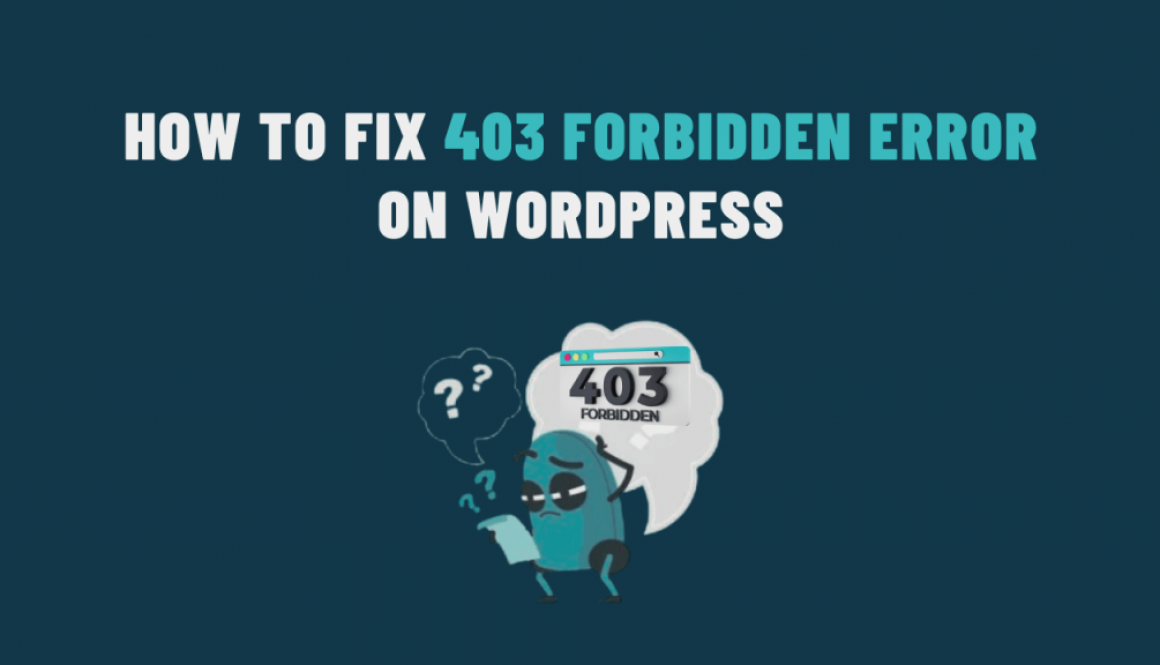How to Fix a 403 Forbidden Error on WordPress
If you’re a WordPress user, you may encounter a 403 Forbidden error at some point. However, this error can be frustrating, as it prevents you from accessing certain parts of your website. In this blog, we’ll explore what causes the 403 Forbidden error on WordPress and provide you with solutions to resolve it.
What is a 403 Forbidden Error?
A 403 Forbidden error is an HTTP status code that indicates the server understands your request but refuses to fulfill it. Besides, it usually means that you don’t have permission to access a specific page or resource on your website. This can be due to various reasons, such as misconfigured server settings, file permissions, or security plugins.
Causes of a 403 Forbidden Error
- File Permissions: Incorrect file and directory permissions can lead to a 403 error. If certain files or directories are set to be inaccessible to your web server, it will generate a 403 error.
- Security Plugins: Overzealous security plugins can sometimes block legitimate users from accessing your site. Besides, they may block your IP address or certain requests, thinking they’re malicious.
- Incorrect .htaccess File: Errors in your .htaccess file, which controls how your server handles requests, can result in a 403 error.
- Server Configuration: Server misconfigurations, such as overly restrictive settings in your server’s configuration. Also, they can trigger this error.
How to Fix a 403 Forbidden Error
1. Check File Permissions
Ensure that the file and directory permissions on your server are correctly set. However, you can use an FTP client or cPanel’s File Manager to access and modify permissions. Typically, directories should have permissions set to 755, and files should have permissions set to 644.
You can change permissions using the following commands in your FTP client or terminal:
find /path/to/your/wordpress/ -type d -exec chmod 755 {} \;
find /path/to/your/wordpress/ -type f -exec chmod 644 {} \;
2. Disable Security Plugins
Temporarily disable any security plugins that may be causing the error. This will help you identify if the issue is related to one of these plugins. If disabling a plugin resolves the error, consider adjusting its settings or finding an alternative security solution.
3. Check .htaccess File
Errors in your .htaccess file can lead to a 403 error. To check this file, navigate to your site’s root directory and locate the .htaccess file. Open it and review its contents. You can rename it to something like “.htaccess.bak” to disable it temporarily and see if the error goes away. If it does, you can regenerate your .htaccess file by going to the WordPress dashboard. Then, navigate to “Settings” > “Permalinks.” Simply click the “Save Changes” button to regenerate the .htaccess file.
4. Review Server Configuration
If you’ve tried all the above steps and the error persists, the issue may be related to your server configuration. Moreover, contact your web hosting provider or server administrator for assistance. They can help review your server settings and make necessary adjustments to resolve the error.
5. WordPress Core Updates
Sometimes, outdated or corrupt WordPress core files can cause 403 errors. Ensure that your WordPress installation is up to date. If it’s not, update to the latest version. Additionally, you can try reinstalling WordPress if the issue persists.
In conclusion, this error can be frustrating, but it’s often solvable by following the steps outlined in this blog. Thus, by checking file permissions, disabling problematic security plugins, and reviewing your .htaccess file. Also, by ensuring your server configuration is correct, you can resolve this issue. Remember to make backups before making any changes to your site.

